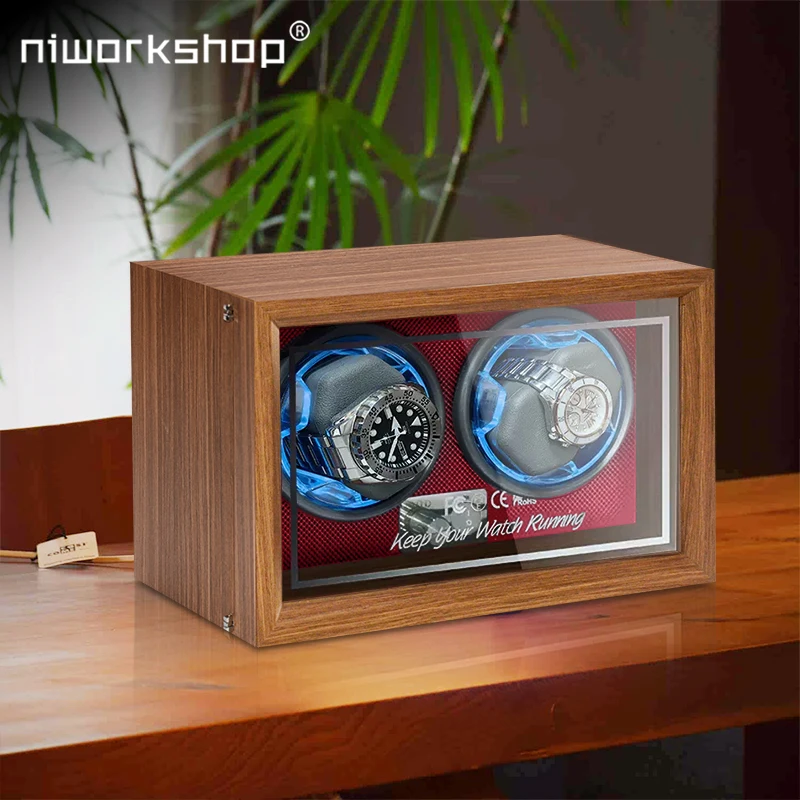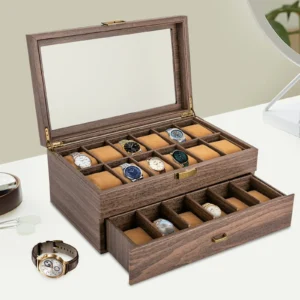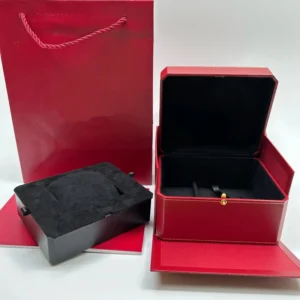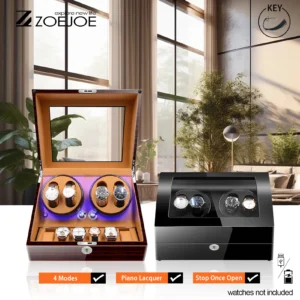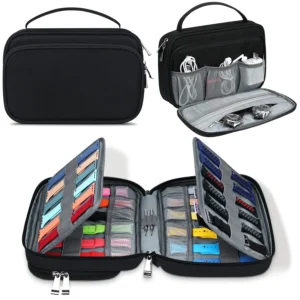Wooden watches have carved out a unique niche in the timepiece market, offering an alternative to traditional metal and plastic options. These distinctive accessories are crafted primarily from various wood types like bamboo, maple, or sandalwood, either entirely or with significant wooden components integrated into their design. Their rising popularity stems from their natural aesthetic appeal, eco-friendly reputation, and distinctive character that sets them apart from conventional watches.
Before investing in a wooden timepiece, it’s essential to understand both their advantages and limitations. While their unique appearance and sustainable credentials are certainly appealing, wooden watches come with inherent challenges that potential buyers should carefully consider.
This article aims to provide an objective examination of the drawbacks associated with wooden watches to help you make an informed purchasing decision. We’ll explore:
- Durability and fragility issues
- Water resistance limitations
- Maintenance requirements
- Environmental sensitivities
- Practical limitations for active lifestyles
- Quality variation across products
Understanding these factors in relation to your lifestyle and preferences will help determine whether choosing wood leather watch boxes and accessories aligns with your needs, or if alternative materials might better serve your requirements. The wood leather watch box comparison factors we’ll discuss apply directly to the watches themselves.
Limited Durability and Fragility Concerns
Wood is inherently less durable than traditional watch materials like stainless steel, titanium, or ceramic. This fundamental difference in material properties creates several durability challenges for wooden watches:
- Natural softness: Most woods used in watchmaking are considerably softer than metals, making them more susceptible to damage from everyday bumps and impacts.
- Scratch vulnerability: Wooden surfaces can be easily marked by fingernails, keys, desk edges, and other common objects that wouldn’t affect metal watches.
- Impact sensitivity: A drop or knock that might merely dent a metal watch can potentially crack or split a wooden timepiece.
- Structural weakening over time: The natural aging process of wood can lead to increased brittleness and vulnerability as the watch gets older.
Different wood types offer varying degrees of hardness and resistance to wear. For example, ebony and rosewood tend to be harder and more scratch-resistant than lighter woods like maple or bamboo. However, even the hardest woods rate significantly lower on the Mohs hardness scale compared to stainless steel or sapphire crystal.
In practical terms, this means wooden watches often show signs of wear much faster than their traditional counterparts. What might look like character-building patina on a metal watch can manifest as more problematic damage on wooden timepieces. The durability wood leather watch cases demonstrate similar properties to the watches themselves, requiring careful handling to maintain their appearance and structural integrity.
Water Resistance Limitations and Moisture Damage
Perhaps the most significant limitation of wooden watches is their vulnerability to water and moisture. Unlike modern metal watches that can offer impressive water resistance ratings, wooden timepieces have inherent restrictions:
- Minimal water resistance: Most wooden watches provide only basic splash resistance rather than true waterproofing. Even those marketed as “water-resistant” typically can withstand little more than hand washing.
- Porous material issues: Wood naturally absorbs moisture from its environment, which can lead to:
- Swelling and warping of the wood components
- Potential for mold or mildew growth in humid conditions
- Water damage to internal watch mechanisms
- Permanent staining or discoloration of the wood
When a manufacturer claims a wooden watch has “30m water resistance,” this doesn’t mean you can swim with it to a depth of 30 meters. Instead, it typically indicates minimal splash resistance suitable only for brief exposure to light water contact. Even condensation can pose a threat to wooden watches in certain circumstances.
Activities to strictly avoid while wearing a wooden watch include:
* Swimming or bathing
* Showering
* Hand washing dishes
* Extended exposure to rain
* Water sports of any kind
Proper safe watch storage protection becomes crucial for preserving wooden timepieces, as specialized watch boxes can provide controlled environments that help mitigate moisture damage risk.
High Maintenance Requirements and Care Challenges
Wooden watches demand significantly more care and attention than their metal counterparts. The maintenance routine for wooden timepieces typically includes:
- Regular cleaning: Gentle wiping with a soft, dry cloth is necessary to remove oils, dirt, and sweat that can damage the wood over time.
- Periodic conditioning: Most wooden watches benefit from occasional application of specialized wood oils or conditioners to prevent drying and cracking—typically recommended every 1-3 months.
- Chemical avoidance: Extra vigilance is required to protect wooden watches from exposure to:
- Hand sanitizers and alcohol-based products
- Perfumes and colognes
- Soaps and detergents
- Sunscreens and lotions
- Careful storage: Wooden watches should be kept in controlled environments away from direct sunlight and extreme temperatures when not worn.
The time investment required for proper wooden watch care is substantially greater than for traditional watches. While a stainless steel watch might need occasional polishing and periodic servicing of its movement, wooden watches demand regular attention to their exterior components just to maintain their basic appearance and structural integrity.
For those who appreciate fine timepieces but prefer minimal maintenance, this ongoing care requirement represents a significant drawback. The maintenance requirements wood leather cases share similar characteristics, making specialized wooden watch boxes particularly helpful for preserving these timepieces.
Sensitivity to Environmental Factors
Wooden watches respond dramatically to environmental conditions in ways that metal watches simply don’t. This sensitivity creates several challenges for owners:
Temperature Fluctuations
- Wood naturally expands in heat and contracts in cold
- Rapid temperature changes can cause stress on the wood structure
- Extreme temperatures may cause permanent warping or cracking
- Repeated thermal cycling can loosen components and affect watch accuracy
Humidity Concerns
- Low humidity (below 40%) can cause wood to dry out, potentially leading to cracking and shrinking
- High humidity (above 60%) promotes swelling and can affect movement functionality
- Seasonal changes in ambient humidity require adjustments in care routines
- Indoor heating and air conditioning systems can create especially problematic dry conditions
Sunlight Exposure
- UV radiation causes fading of wood’s natural color and tone
- Prolonged sun exposure can dry out natural oils in the wood
- Heat from direct sunlight accelerates aging and potential cracking
- UV damage weakens the structural integrity over time
Chemical Exposure
- Common substances like alcohol, perfumes, and cleaning products can strip finishes
- Oil-based products can stain or discolor wooden components
- Even mild acids from skin perspiration can affect wood appearance over time
The optimal environment for wooden watches typically includes moderate temperatures (65-75°F/18-24°C) and medium humidity levels (45-55%). These parameters may be difficult to maintain, particularly for those living in regions with extreme climates or seasonal variations.

Limitations for Active Lifestyles and Sports
Wooden watches have significant practical limitations for those with active lifestyles. Their inherent fragility makes them poorly suited for:
- High-impact sports: Activities like basketball, tennis, or running create vibration and impact that can damage wooden components.
- Water-based activities: Swimming, water skiing, or even excessive sweating pose serious risks to wooden timepieces.
- Outdoor adventures: Hiking, camping, or gardening expose watches to moisture, dirt, and physical impacts.
- Gym workouts: Weight training or fitness classes increase exposure to sweat and risk of impacts.
Unlike dedicated sports watches designed with shock absorption, reinforced cases, and high water resistance ratings, wooden watches lack the fundamental durability required for these activities.
For active individuals, this often means needing a separate sports watch for physical activities and reserving the wooden watch for more casual settings. Alternatively, using protective luxury watch travel case solutions when on the move can help minimize potential damage.
Quality Variation and Authenticity Concerns
The wooden watch market exhibits extraordinary variation in quality, which can significantly impact the severity of all disadvantages previously discussed:
- Material quality spectrum: Significant differences exist between:
- Solid wood components made from quality timber
- Thin wood veneers applied over plastic or metal bases
- “Faux wood” finishes that merely mimic wood grain
- Craftsmanship variations: Precision in manufacturing affects:
- Fit and finish of components
- Durability of connections between wood elements
- Overall structural integrity
- Movement quality: Internal mechanisms range from:
- Basic mass-produced quartz movements
- Higher-quality Japanese or Swiss mechanisms
Visual indicators of higher-quality wooden watches include:
* Consistent grain patterns that flow naturally across components
* Smooth, even finishes without rough edges
* Substantial weight that indicates solid wood rather than veneer
* Precise fit between components without large gaps
Lower-quality wooden watches typically amplify all the disadvantages discussed in this article, while higher-quality pieces may mitigate some issues through superior craftsmanship and materials. Understanding best materials watch storage principles can help in identifying quality indicators in the watches themselves.
Potential Health Concerns and Allergic Reactions
While relatively uncommon, wooden watches can potentially cause skin irritation or allergic reactions in sensitive individuals:
- Wood sensitivities: Some wood species contain natural compounds that may trigger reactions in certain people:
- Exotic hardwoods like rosewood and ebony are more likely to cause reactions
- Symptoms may include redness, itching, or rash where the watch contacts skin
- Finish reactions: Chemicals used in varnishes, lacquers, or stains can cause contact dermatitis in sensitive individuals
- Moisture issues: Sweat trapped between the wooden watch and skin creates an environment where:
- Bacteria can flourish
- Wood may absorb body oils and perspiration
- Skin irritation becomes more likely
For those with known wood allergies or sensitive skin, hypoallergenic woods like maple or bamboo typically pose fewer problems. However, individual reactions vary widely, and what causes no issues for one person may trigger reactions in another.
Repair Challenges and Limited Restoration Options
When a wooden watch sustains damage, owners often face significant repair challenges that don’t exist with traditional timepieces:
- Limited repair specialists: Few watchmakers specialize in wooden watch repair, making service options scarce
- Matching difficulties: Repairing damaged wood components often involves challenges in:
- Matching the exact wood type, grain pattern, and color
- Finding replacement parts specific to wooden models
- Achieving invisible repairs due to wood’s natural variation
- Irreparable damage: Certain types of damage may be unfixable:
- Deep cracks or splits in the wood
- Significant warping from water damage
- Extensive water damage to both case and movement
Even routine maintenance like battery replacement can be more complicated with wooden watches, as technicians must take extra care not to damage the more delicate wooden components during the process.
By contrast, traditional watches benefit from an established global network of repair specialists and standardized parts. This repair infrastructure disparity represents a significant long-term disadvantage for wooden watch owners, particularly when considering potential display in a watch display case after the timepiece is no longer functional.
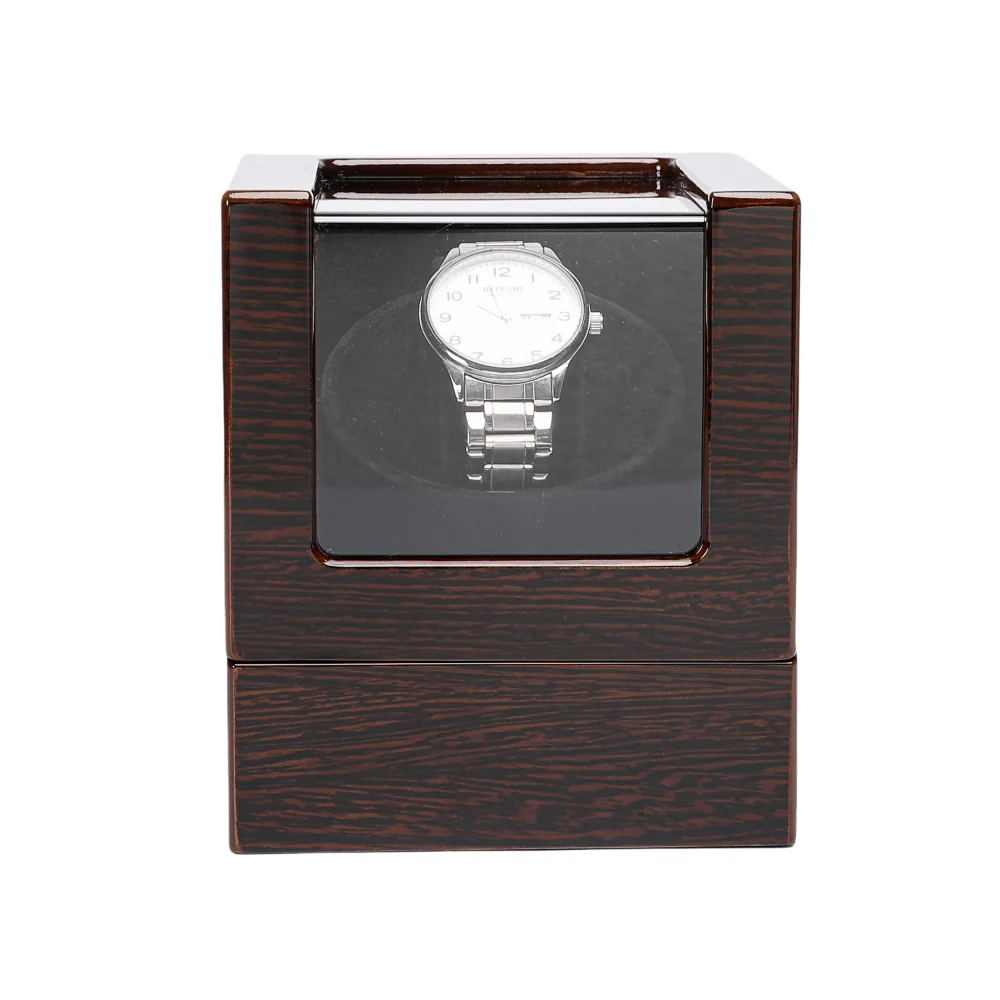
Weight and Comfort Trade-offs
The lightweight nature of wooden watches presents both advantages and disadvantages:
Pros:
* Significantly lighter than metal watches of comparable size
* Less wrist fatigue during extended wear
* Often more comfortable in hot weather than metal bracelets
Cons:
* Can feel insubstantial or “cheap” compared to the satisfying heft of quality metal watches
* May shift position on wrist more frequently due to lighter weight
* Wooden bands may require a “break-in” period for comfortable fit
* Expansion and contraction with humidity changes can affect fit and comfort
Some wearers find that wooden watches feel less substantial than traditional timepieces, lacking the reassuring weight often associated with quality watches. This perception varies widely based on personal preference, but represents an adjustment for those accustomed to metal watches.
Style Limitations and Fashion Versatility
Wooden watches have distinct style limitations that affect their versatility:
- Casual leaning: Most wooden watches project an inherently casual or earthy aesthetic that may clash with:
- Formal business attire
- Evening wear and black-tie events
- Traditional professional environments
- Color palette restrictions: Wooden watches are limited to:
- Natural wood tones (browns, tans, amber)
- Limited contrast options compared to metals and synthetic materials
- Design constraints: Wood’s physical properties limit certain design elements:
- Thinner bezels and cases are difficult to achieve due to fragility
- Intricate detailing is more challenging to execute in wood
- Water resistance requirements constrain innovative designs
While wooden watches make a distinctive fashion statement, they lack the chameleon-like ability of traditional watches to transition seamlessly between casual, business, and formal settings. This reduced versatility means wooden watches often serve as secondary timepieces rather than everyday wear for many owners.
Price-to-Value Considerations
The economic equation for wooden watches presents several challenges when evaluating long-term value:
- Price premium: Quality wooden watches often cost more than comparable traditional watches due to:
- Specialized manufacturing processes
- Limited production scales
- Marketing emphasis on uniqueness and eco-credentials
- Shorter lifespan expectancy: Even well-maintained wooden watches typically have shorter functional lifespans than quality traditional watches
- Minimal resale value: Unlike certain luxury watch brands that retain value, wooden watches generally:
- Depreciate significantly after purchase
- Have limited secondary market appeal
- Show more visible wear that reduces resale potential
- Hidden ownership costs: Additional expenses include:
- Specialized cleaning products and conditioners
- Protective storage solutions
- More frequent servicing or replacement
For perspective, a $300 wooden watch might require $50-100 in maintenance products over its lifespan and still last only 5-7 years with regular wear. A comparable quality traditional watch might function reliably for 10-15+ years with minimal additional care costs.
This value calculation makes wooden watches more of a fashion purchase than an investment, unlike certain traditional watches that can maintain value or even appreciate over time. Proper storage in a quality watch organizer can help preserve value, but cannot entirely overcome these inherent limitations.
Are Wooden Watches Right for Your Lifestyle?
Determining whether a wooden watch suits your needs requires honest assessment of several key factors:
Lifestyle Compatibility:
* Do you work in an environment where your watch may get bumped or scratched?
* Do you frequently wash your hands or work around water?
* Are you active in sports or outdoor activities?
* Do you prefer low-maintenance accessories?
Environmental Considerations:
* Do you live in a region with extreme humidity (very dry or very humid)?
* Are you frequently outdoors in varying weather conditions?
* Does your local climate feature dramatic seasonal changes?
* Do you spend time in chlorinated pools or saltwater environments?
Care Commitment:
* Are you willing to regularly oil and condition a wooden watch?
* Will you remember to remove your watch during hand washing?
* Can you commit to proper storage when the watch isn’t worn?
* Are you willing to take additional precautions during activities?
Style and Budget Priorities:
* Is versatility across different dress codes important to you?
* Do you expect your watch to maintain its appearance for many years?
* Are you looking for an investment piece or a fashion accessory?
* Is the unique aesthetic of wood worth the additional care requirements?
Wooden watches are typically best suited for individuals who:
* Appreciate natural aesthetics and sustainable materials
* Have a collection of watches for different occasions
* Maintain relatively gentle daily activities
* Enjoy the ritual of caring for special possessions
Luxury Watch Boxes, Men's Watch Boxes, Single Watch Box
Price range: $903.35 through $980.97 Select options This product has multiple variants. The options may be chosen on the product pageMen's Watch Organizer, Watch Display Case, Watch Organizer
Price range: $112.68 through $169.45 Select options This product has multiple variants. The options may be chosen on the product pageAutomatic Watch Winder, Luxury Watch Winder, Single Watch Box
$307.39 Select options This product has multiple variants. The options may be chosen on the product pageLuxury Watch Boxes, Luxury Watch Travel Case
Price range: $200.33 through $224.57 Select options This product has multiple variants. The options may be chosen on the product page4 Watch Winder, 6 Watch Box, Automatic Watch Winder
$512.31 Select options This product has multiple variants. The options may be chosen on the product pageWatch Organizer, Watch Roll Travel Case
Price range: $88.39 through $99.36 Select options This product has multiple variants. The options may be chosen on the product page
For those with active lifestyles, professional environments requiring formal attire, or those seeking low-maintenance durability, traditional watches may better serve their needs.
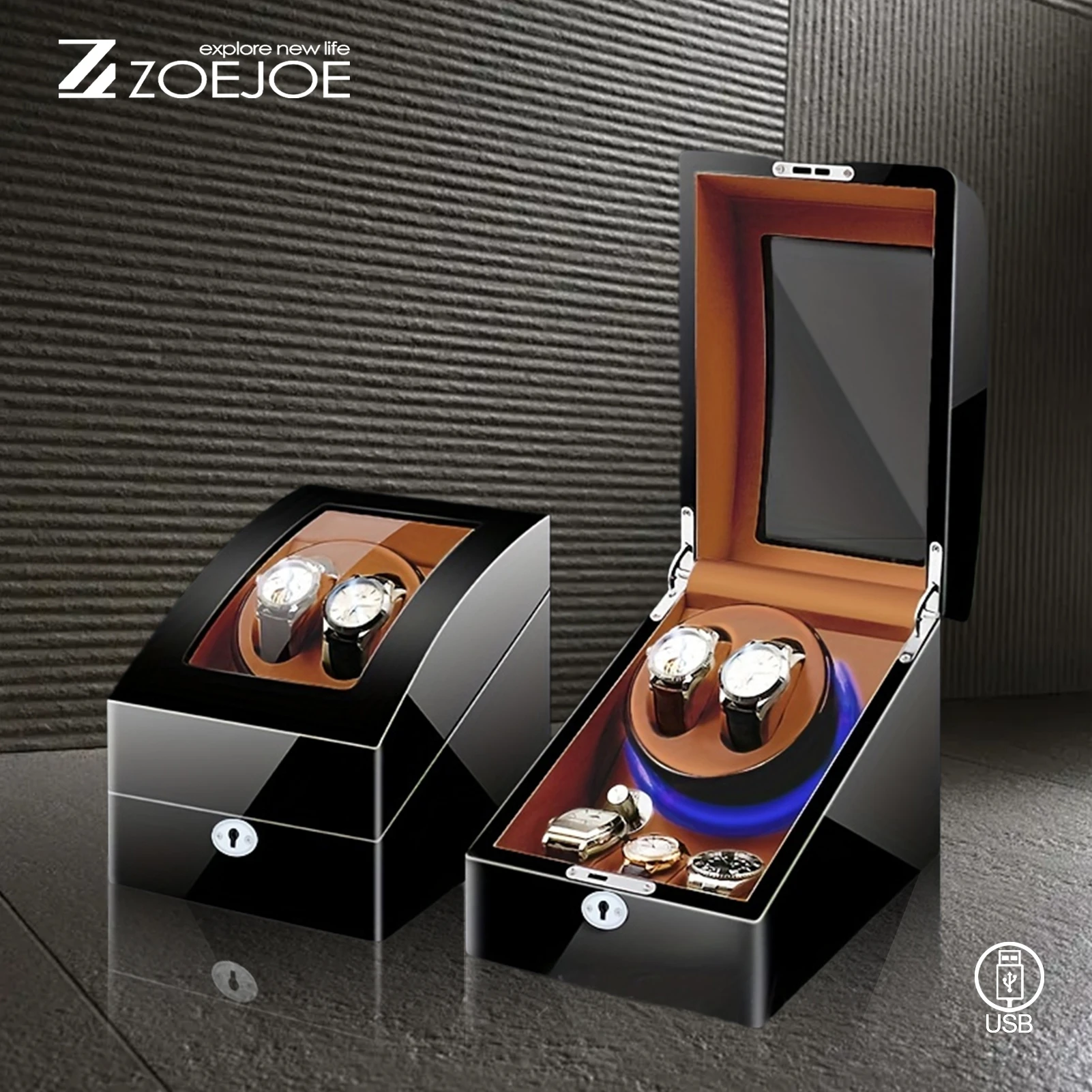
How to Minimize Wooden Watch Disadvantages
If you’re drawn to the unique appeal of wooden watches despite their limitations, these strategies can help minimize potential issues:
Choose Wisely:
* Select harder wood varieties like ebony, rosewood, or walnut for better durability
* Look for models with quality metal components for critical structural elements
* Invest in watches with reliable Japanese or Swiss movements
* Choose designs with sealed finishes that offer better moisture protection
Establish a Care Routine:
* Apply food-grade mineral oil or specialized wood conditioner every 1-2 months
* Clean with a soft, dry cloth after each wearing to remove skin oils and moisture
* Store in a controlled environment using a quality watch box when not worn
* Keep away from direct sunlight and heat sources
Adapt Your Habits:
* Remove your wooden watch before:
* Showering or bathing
* Swimming or water activities
* Washing dishes or extensive hand washing
* Applying lotions, perfumes, or sunscreen
* Consider a protective sleeve or case when traveling
* Rotate with other watches to extend lifespan
Storage Solutions:
* Use humidity-controlled leather watch boxes to maintain optimal moisture levels
* Store away from windows and heating/cooling vents
* Consider silica gel packets in storage to control excess moisture
* Keep wooden watches separated from other items to prevent scratching
With proper care and realistic expectations, a wooden watch can provide years of enjoyable wear while showcasing your appreciation for natural materials and distinctive style. Understanding these limitations from the beginning helps ensure satisfaction with your purchase and appropriate care for your timepiece.

